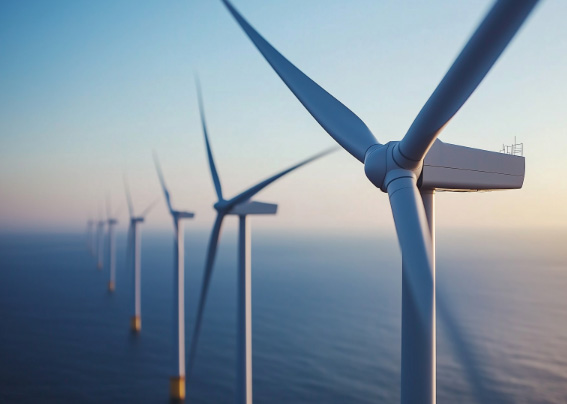On Friday, December 13th, the UK Government published its Clean Power 2030 Action Plan, proposing £40 bn per year to achieve 95 % of UK power generation through renewable energy and nuclear power. This is forecast to almost quarter the average carbon intensity of UK electricity from 171 g CO2e kWh-1 in 2023 to below 50 g CO2e kWh-1. Let’s hope the inauspicious release date is not a portent of the future!
At ESR Technology, we are at the forefront of progress towards greener energy, from renewable energy R&D projects to environmental impact assessments, to reducing the impact of existing oil and gas infrastructure, so naturally this report has us excited. Here are four reasons 2025 will be a great year for renewable energy.
Grid connections for scale-up
Experts at the National Grid have informed ESR that one of the key challenges to developing new renewable power generation facilities is getting a megawatt connection to the national grid, with the queue in some cases being a decade long and containing over 700 GW of proposed capacity! This not only delays projects already in the pipeline but makes it difficult to scale up emerging technologies such as tidal streams. A big issue here is that the queue operates on a first come, first served basis, and so is clogged with projects without real prospects and prioritisation for renewables.
The government has highlighted reforming the grid connection queue as a major priority for 2030; we are hopeful that this will remove a substantial obstacle to renewable scale-up and stimulate significant growth and investment. At ESR, we are particularly excited about opportunities in tidal and offshore wind, which pose a range of challenges we are uniquely positioned to address.
Planning reform for critical infrastructure
This is not the only grid-related challenge; a move towards renewables means more intermittent and unpredictable power supply. This is only compounded by increasing electrification of previously fuel-powered sectors. Current renewable roll-out can be limited by the transmission capacity of the grid, meaning we will require a vast amount of new transmission infrastructure by 2030.
In such a nature-depleted country as the UK, planning laws are justly strict to protect what we have. However, backlogs can mean years of delays for new transmission capacity vital to protecting that precious nature for generations to come.
Proposed exemptions for net zero-critical infrastructure, as well as prioritisation, will streamline the process and enable the UK to meet its climate goals, as well as stimulate the whole value chain involved in delivering these projects from manufacturing firms to engineering and environmental firms, and skilled labour on the ground. ESR expects to support many of these projects through risk and environmental impact assessments as well as providing expert advice in ensuring the long-term durability of materials and designs.
Investment in nuclear to secure base-load capacity
Nuclear power has long been maligned by environmental groups, but it is one of our most powerful tools to ease our withdrawal from fossil fuels. With almost 5 GW of nuclear capacity expected to go offline by 2030, the gap needs to be plugged. With decades of nuclear experience, ESR has been supporting the life extension of multiple nuclear facilities by developing novel damage accumulation models, specifying and sourcing replacement parts, and carrying out testing.
The UK Government is set to make a final decision on the Great British Energy-let small modular reactor programme in the 2025 Spending Review; we hope that they will see the long-term strategic value of continued investment in nuclear power.
Low-carbon dispatchable power for energy security
Currently, we heavily rely on gas to fill the gap between baseload and demand, but this is carbon-intensive and since the War in Ukraine, strategically risky. One interesting option, in which the UK is a global leader, is hydrogen, which can be generated and stored when clean power is plentiful, and either cleanly burned or consumed in a fuel cell to quickly meet demand. Almost £30 bn investment has been committed to the hydrogen industry, which will help address key hydrogen storage and transport challenges, such as hydrogen embrittlement, on which ESR has worked extensively.
Investment is also planned in employing carbon capture and storage technologies to decarbonise existing natural gas-fuelled power stations, providing yet more exciting opportunities for technology development.
Contact our renewables experts at ESR Technology to discuss how we can support your project. Email info@esrtechnology.com or enquire via our website contact page https://esrtechnology.com/contact/
